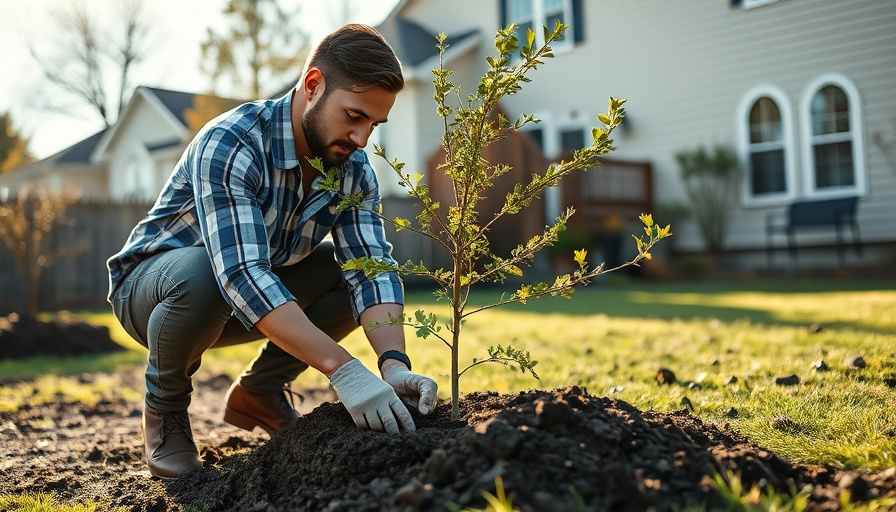
Planting Before You Plant: The Importance of Preparation
As Arbor Day approaches this April, many may feel the urge to begin planning their spring gardening, including planting trees. However, an often-overlooked detail in tree planting is timing. Research has shown that the optimal time to plant trees isn't during the warmer months but rather in the cooler fall season. Cooler temperatures and the arrival of seasonal rains give young roots the chance to settle without the stress of harsh summer conditions. This small timing adjustment can significantly influence a tree's chances of thriving.
The Remarkable Benefits of Tree Planting
Trees bring a multitude of benefits to our environment. From improving air quality to enhancing property values, the returns on investing in trees are immense. Notably, trees are natural air filters, removing pollutants from our atmosphere, providing shade, and aiding in stormwater management, which in turn helps reduce urban flooding. It’s striking to note that mature urban trees can lower energy costs for heating and cooling by nearly 47%. Additionally, research indicates that urban forests store monumental amounts of carbon, cumulatively storing around 700 million metric tonnes in the U.S. alone.
The Climate Impact: Trees as Allies
In an era where climate change poses significant threats, trees are powerful allies in our fight. Urban forests play a pivotal role in carbon sequestration—removing over 22 million tonnes of carbon annually. They also save lives by reducing the heat intensity in urban areas, thus preventing heat-related deaths, which is particularly crucial in cities known for extreme temperatures. For instance, expanding tree canopy coverage in Los Angeles has been linked to a dramatic decrease in emergency heat-related visits.
The Critical Step: Planning Your Tree Planting
Before digging a hole and planting a tree, it’s essential to have a strategic plan in place. Studies have documented alarming mortality rates among newly planted trees, with some areas reporting rates as high as 38%. Key factors influencing tree survival include proper site selection and planting techniques. The survival of a tree can often be linked back to the contractor’s expertise, emphasizing the role of meticulous preparation. Therefore, this Arbor Day and beyond, consider investing time in planning your tree-planting project to ensure that your trees can flourish and provide all their valuable benefits.
Tips for Successful Tree Planting
Choosing the right location is imperative. Study the selected spot’s sun exposure, soil conditions, and available space for growth to ensure the long-term vitality of your tree. Research the types of trees that are native to your region, as these trees will thrive better and support local ecosystems. Furthermore, consider utilizing a tree care service or consulting with local gardening experts to ensure proper techniques are employed. Beyond planting, regular maintenance, including watering, mulching, and pruning, will significantly enhance your tree's survival rates.
Ultimately, the key takeaway is that carefully planned tree planting can lead to thriving trees, improved local environments, and enhanced community resilience. As you gear up for Arbor Day, remember: action without planning may result in wasted resources. Invest time for impactful growth!
Join the movement—a carefully planned tree can make all the difference for our planet. Let's work together to foster green communities.
 Add Row
Add Row  Add
Add 




Write A Comment